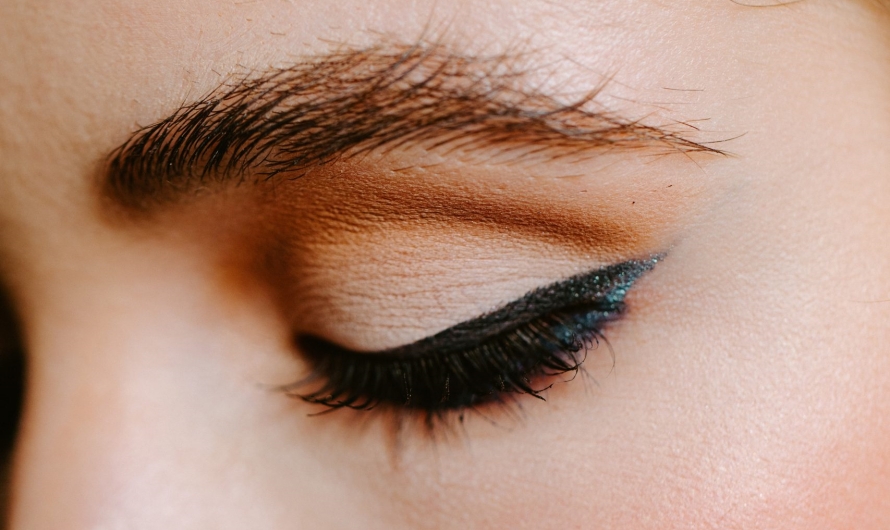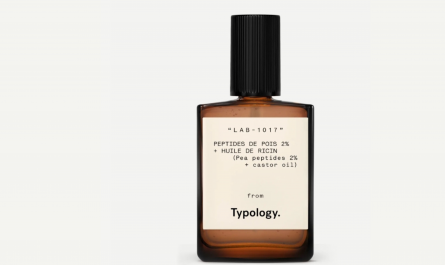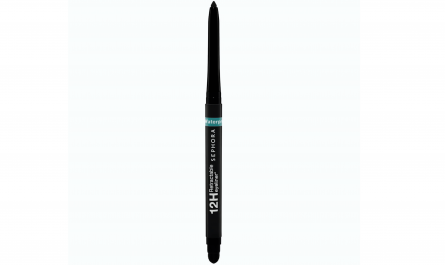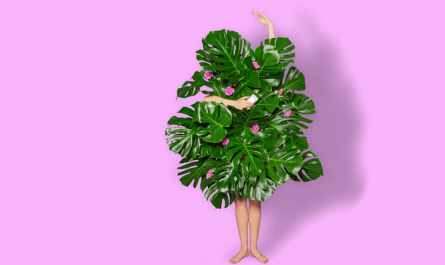Have you ever spent hours applying your makeup in the morning, only to find it smudged, faded, or melted by noon? If you’re tired of constantly checking and fixing your makeup, you might want to learn some tips and tricks on how to make it last all day long. In this article, we’ll show you how to choose the right products, apply them correctly, and maintain them throughout the day, so you can look flawless from dawn to dusk.
Why you need long-lasting makeup
Long-lasting makeup is not only convenient, but also beneficial for your skin and confidence. Here are some reasons why you might want to invest in some quality products and techniques that can help your makeup stay put:
- You have a busy schedule. Whether you’re working, studying, running errands, or attending events, you don’t have time to constantly reapply your makeup or worry about how it looks. You want to focus on your tasks and goals without being distracted by your appearance.
- You have oily or combination skin. If your skin tends to produce excess oil or sweat throughout the day, you might find that your makeup slides off or breaks down easily. You need products that can control shine and adhere well to your skin without clogging your pores or causing breakouts.
- You have dry or sensitive skin. If your skin tends to get dry or irritated throughout the day, you might find that your makeup cracks or flakes off easily. You need products that can hydrate and soothe your skin without drying it out or causing redness.
- You live in a hot or humid climate. If you’re exposed to high temperatures or humidity, you might find that your makeup melts or smears easily. You need products that can resist heat and moisture without feeling heavy or sticky on your skin.
- You want to look your best. Whether you’re going for a natural or glamorous look, you want your makeup to enhance your features and express your personality. You don’t want it to fade or change color throughout the day, making you look dull or tired. You want it to stay true and vibrant from morning to night.
Factors that affect makeup longevity
Before we get into the tips and tricks on how to make your makeup last all day long, let’s take a look at some factors that can affect how long your makeup stays on:
- Your skin type. As mentioned above, different skin types have different needs and challenges when it comes to makeup longevity. Oily skin needs products that can absorb oil and prevent shine, while dry skin needs products that can moisturize and prevent flaking. Combination skin needs products that can balance both oiliness and dryness in different areas of the face.
- Your skin condition. Apart from your skin type, your skin condition can also influence how well your makeup adheres and lasts on your skin. If you have acne, scars, wrinkles, pigmentation, or other imperfections, you might need more coverage and correction from your makeup products. However, this can also make them more prone to caking or creasing if not applied properly.
- Your product quality. Not all makeup products are created equal. Some are more pigmented, long-wearing, and transfer-proof than others. Some are more suitable for certain skin types, tones, and preferences than others. You need to choose products that match your needs and expectations, and that are formulated with high-quality ingredients that won’t harm your skin or health.
- Your product compatibility. Even if you have the best makeup products in the world, they won’t work well if they don’t work well together. Some products can react with each other and cause them to separate, oxidize, or change color on your skin. You need to make sure that your products are compatible with each other and with your skin, and that they blend seamlessly without clashing or interfering with each other.
- Your application technique. How you apply your makeup can also make a big difference in how long it lasts on your skin. You need to use the right tools, methods, and amounts of product to achieve a smooth, even, and natural-looking finish. You also need to set and seal your makeup with the right products to prevent it from smudging, fading, or transferring throughout the day.
Tips for long-lasting makeup
Now that you know what factors can affect your makeup longevity, let’s move on to the tips and tricks on how to make it last all day long. Here are some general guidelines on how to choose and apply your makeup products for maximum durability and performance:
Choose the right products
The first step to achieving long-lasting makeup is to choose the right products for your skin type, tone, and desired look. Here are some suggestions on what products to look for and what to avoid:
Primer
A primer is a product that you apply before your foundation to create a smooth and even base for your makeup. It can also help your makeup adhere better to your skin and last longer. There are different types of primers for different purposes, such as smoothing pores, blurring imperfections, hydrating dryness, controlling oiliness, correcting color, or adding glow.
- Look for: A primer that suits your skin type and concerns, and that matches the finish and formula of your foundation. For example, if you have oily skin and want a matte look, choose a primer that can absorb oil and mattify your skin. If you have dry skin and want a dewy look, choose a primer that can hydrate and illuminate your skin.
- Avoid: A primer that clashes with your skin type or foundation, or that contains ingredients that can irritate or clog your skin. For example, if you have oily skin and use a silicone-based primer, it might make your skin more slippery and prone to breakouts. If you have dry skin and use an alcohol-based primer, it might make your skin more flaky and tight.
Foundation
A foundation is a product that you apply over your primer to even out your skin tone and cover any imperfections. It can also help protect your skin from environmental damage and enhance your complexion. There are different types of foundations for different levels of coverage, finishes, and formulas, such as liquid, cream, powder, stick, cushion, or mineral.
- Look for: A foundation that matches your skin tone and undertone, and that provides the level of coverage and finish that you want. For example, if you want a natural look with light coverage and a satin finish, choose a foundation that is sheer to medium in coverage and has a luminous or semi-matte finish. If you want a full-glam look with full coverage and a matte finish, choose a foundation that is medium to full in coverage and has a matte or velvet finish.
- Avoid: A foundation that is too light or too dark for your skin tone, or that has the wrong undertone for your complexion. For example, if you have warm undertones (yellow or golden), avoid foundations that are too pink or cool-toned. If you have cool undertones (pink or blue), avoid foundations that are too yellow or warm-toned.
Concealer
A concealer is a product that you apply over your foundation to conceal any blemishes or dark circles that are still visible. It can also help brighten up your under-eye area and highlight certain features of your face. There are different types of concealers for different purposes, such as liquid, cream, stick, pot, or color-correcting.
- Look for: A concealer that is one or two shades lighter than your foundation for under-eye area or highlighting purposes. For blemishes or dark spots, choose a concealer that matches your foundation exactly. For color-correcting purposes (such as neutralizing redness or sallowness), choose a concealer that has the opposite color on the color wheel (such as green for redness or purple for sallowness).
- Avoid: A concealer that is too light or too dark for your under-eye area or blemishes. For example, if you use a concealer that is too light for your under-eye area, it might create a white cast or a flashback effect in photos. If you use a concealer that is too dark for your blemishes, it might draw more attention to them instead of hiding them.
Powder
A powder is a product that you apply over your foundation and concealer to set and mattify your makeup. It can also help reduce shine, blur pores, and smooth out your skin texture. There are different types of powders for different purposes, such as loose, pressed, translucent, or tinted.
- Look for: A powder that matches your skin tone and undertone, and that has a fine and silky texture. For example, if you have oily skin and want a matte look, choose a powder that can absorb oil and keep your makeup in place. If you have dry skin and want a dewy look, choose a powder that can hydrate and add radiance to your skin.
- Avoid: A powder that is too light or too dark for your skin tone, or that has a chalky or cakey texture. For example, if you use a powder that is too light for your skin tone, it might create a white cast or a flashback effect in photos. If you use a powder that is too dark for your skin tone, it might make your makeup look muddy or patchy.
Blush
A blush is a product that you apply on your cheeks to add some color and warmth to your face. It can also help define your cheekbones and create a healthy and youthful glow. There are different types of blushes for different effects, such as powder, cream, liquid, gel, or stick.
- Look for: A blush that suits your skin tone and undertone, and that has a pigmented and blendable formula. For example, if you have fair skin with cool undertones, choose a blush that is pink or peach in color and has a matte or satin finish. If you have dark skin with warm undertones, choose a blush that is coral or plum in color and has a shimmer or metallic finish.
- Avoid: A blush that clashes with your skin tone or undertone, or that has a sheer or patchy formula. For example, if you use a blush that is too light or too bright for your skin tone, it might make you look washed out or clownish. If you use a blush that is too dark or too dull for your skin tone, it might make you look bruised or muddy.
Eyeshadow
An eyeshadow is a product that you apply on your eyelids to add some color and dimension to your eyes. It can also help enhance your eye shape and size and create different moods and styles. There are different types of eyeshadows for different effects, such as powder, cream, liquid, gel, pencil, or stick.
- Look for: An eyeshadow that complements your eye color and shape, and that has a pigmented and long-lasting formula. For example, if you have blue eyes and almond-shaped eyes, choose an eyeshadow that is brown or gold in color and has a matte or shimmer finish. If you have brown eyes and hooded eyes, choose an eyeshadow that is purple or green in color and has a satin or metallic finish.
- Avoid: An eyeshadow that clashes with your eye color or shape, or that has a sheer or creasing formula. For example, if you use an eyeshadow that is too light or too dark for your eye color, it might make your eyes look dull or harsh. If you use an eyeshadow that is too shimmery or glittery for your eye shape, it might make your eyes look smaller or droopy.
Eyeliner
An eyeliner is a product that you apply along your lash line to define and accentuate your eyes. It can also help create different effects such as winged, smoky, cat-eye, or graphic. There are different types of eyeliner for different purposes such as pencil, liquid, gel, felt-tip pen.
- Look for: An eyeliner that matches your eye color and style preference, and that has a smooth and long-lasting formula. For example, if you want a natural look with brown eyes, choose an eyeliner that is brown or black in color and has a pencil or gel formula. If you want a dramatic look with green eyes, choose an eyeliner that is purple or blue in color and has a liquid or felt-tip pen formula.
- Avoid: An eyeliner that clashes with your eye color or style preference, or that has a dry or smudging formula. For example, if you use an eyeliner that is too light or too bright for your eye color, it might make your eyes look washed out or unnatural. If you use an eyeliner that is too thick or too messy for your style preference, it might make your eyes look heavy or sloppy.
Mascara
A mascara is a product that you apply on your lashes to add some length, volume, and curl to them. It can also help open up your eyes and make them look more awake and expressive. There are different types of mascara for different effects such as waterproof, volumizing, lengthening, curling, or fiber.
- Look for: A mascara that suits your lash type and desired look, and that has a clump-free and long-lasting formula. For example, if you have short and straight lashes and want a dramatic look, choose a mascara that is waterproof and volumizing. If you have long and curly lashes and want a natural look, choose a mascara that is lengthening and curling.
- Avoid: A mascara that doesn’t suit your lash type or desired look, or that has a flaky or smearing formula. For example, if you use a mascara that is too heavy or too wet for your lash type, it might weigh down your lashes or make them stick together. If you use a mascara that is not waterproof or long-lasting for your desired look, it might run or fade throughout the day.
Lipstick
A lipstick is a product that you apply on your lips to add some color and moisture to them. It can also help define your lip shape and size and create different moods and styles. There are different types of lipstick for different effects such as matte, satin, gloss, sheer, or metallic.
- Look for: A lipstick that flatters your skin tone and undertone, and that has a pigmented and long-lasting formula. For example, if you have fair skin with cool undertones, choose a lipstick that is pink or red in color and has a matte or satin finish. If you have dark skin with warm undertones, choose a lipstick that is coral or brown in color and has a gloss or metallic finish.
- Avoid: A lipstick that clashes with your skin tone or undertone, or that has a sheer or drying formula. For example, if you use a lipstick that is too light or too bright for your skin tone, it might make you look washed out or clownish. If you use a lipstick that is too dark or too dull for your skin tone, it might make you look aged or gloomy.
Apply makeup correctly
The second step to achieving long-lasting makeup is to apply it correctly on your skin. Here are some general guidelines on how to apply your makeup products for maximum durability and performance:
Prep your skin
Before applying any makeup products on your face, you need to prep your skin by cleansing, toning, moisturizing, and applying sunscreen. This will help remove any dirt, oil, or makeup residue from your skin and create a smooth and hydrated canvas for your makeup. It will also help protect your skin from sun damage and premature aging.
Use a light hand
When applying your makeup products on your face, you need to use a light hand and apply them in thin and even layers. This will help prevent your makeup from looking cakey, heavy, or unnatural on your skin. It will also help your makeup last longer and avoid creasing or cracking throughout the day.
Blend well
When applying your makeup products on your face, you need to blend them well with your fingers, brushes, or sponges. This will help create a seamless and flawless finish on your skin and avoid any harsh lines or edges. It will also help your makeup look more natural and harmonious on your face.
Set with spray
After applying your makeup products on your face, you need to set them with a setting spray or mist. This will help lock in your makeup and prevent it from smudging, fading, or transferring throughout the day. It will also help refresh and hydrate your skin and add some glow or matte effect to your makeup.
Maintain your makeup throughout the day
The third step to achieving long-lasting makeup is to maintain it throughout the day. Here are some general guidelines on how to keep your makeup looking fresh and flawless from morning to night:
Avoid touching your face
One of the easiest ways to ruin your makeup is to touch your face with your hands or other objects. This can transfer oil, dirt, or bacteria to your skin and cause your makeup to slide off or break down. It can also cause irritation or infection to your skin and lead to breakouts or inflammation. To avoid this, try to keep your hands away from your face as much as possible and use clean tissues or cotton pads if you need to wipe or blot something.
Blot excess oil
If you have oily or combination skin, you might notice that your skin gets shiny or greasy throughout the day. This can make your makeup look oily or patchy and cause it to wear off faster. To avoid this, try to blot excess oil from your skin with blotting papers or powder. This will help absorb oil and mattify your skin without disturbing your makeup.
Refresh with mist
If you have dry or sensitive skin, you might notice that your skin gets dry or tight throughout the day. This can make your makeup look dry or flaky and cause it to crack or peel off. To avoid this, try to refresh your skin with a hydrating mist or spray. This will help moisturize and soothe your skin without ruining your makeup.
Touch up with powder or lipstick
If you notice that your makeup has faded or changed color throughout the day, you might want to touch it up with some powder or lipstick. This will help restore some color and coverage to your face and make it look more vibrant and polished. However, be careful not to overdo it and apply too much product, as this can make your makeup look cakey or heavy.
Conclusion
In conclusion, making your makeup last all day long is not impossible if you follow some simple tips and tricks. You need to choose the right products for your skin type, tone, and desired look; apply them correctly on your skin; and maintain them throughout the day. By doing so, you can enjoy a flawless and beautiful makeup look from dawn to dusk.
FAQs
Here are some frequently asked questions about long-lasting makeup:
- Q: How can I make my eyeliner last longer?
- A: You can make your eyeliner last longer by using a waterproof or smudge-proof formula; applying a primer or eyeshadow base on your eyelids before applying eyeliner; setting your eyeliner with a matching eyeshadow or powder; and avoiding rubbing or touching your eyes throughout the day.
- Q: How can I make my lipstick last longer?
- A: You can make your lipstick last longer by using a long-wearing or transfer-proof formula; exfoliating and moisturizing your lips before applying lipstick; lining and filling your lips with a lip liner before applying lipstick; blotting your lips with a tissue after applying lipstick; and reapplying your lipstick after eating or drinking.
- Q: How can I make my makeup last longer in hot or humid weather?
- A: You can make your makeup last longer in hot or humid weather by using products that are water-resistant, oil-free, and lightweight; applying less product and more powder on your face; setting your makeup with a setting spray or mist; and blotting excess oil or sweat from your face throughout the day.
- Q: How can I remove long-lasting makeup without damaging my skin?
- A: You can remove long-lasting makeup without damaging your skin by using a gentle and effective makeup remover that can dissolve waterproof or long-wearing formulas; massaging your face with the makeup remover for a few minutes to loosen up the makeup; wiping off the makeup with a soft and damp cloth or cotton pad; and following up with a cleanser, toner, and moisturizer to cleanse, balance, and hydrate your skin.
- Q: How often should I replace my makeup products to ensure their quality and safety?
- A: You should replace your makeup products according to their expiration dates or shelf lives, which vary depending on their types, formulas, and packaging. As a general rule, you should replace your mascara every 3 to 6 months; your liquid or cream products every 6 to 12 months; and your powder products every 12 to 24 months. You should also replace your makeup products if they change in color, texture, smell, or performance, or if they cause any irritation or infection to your skin.




